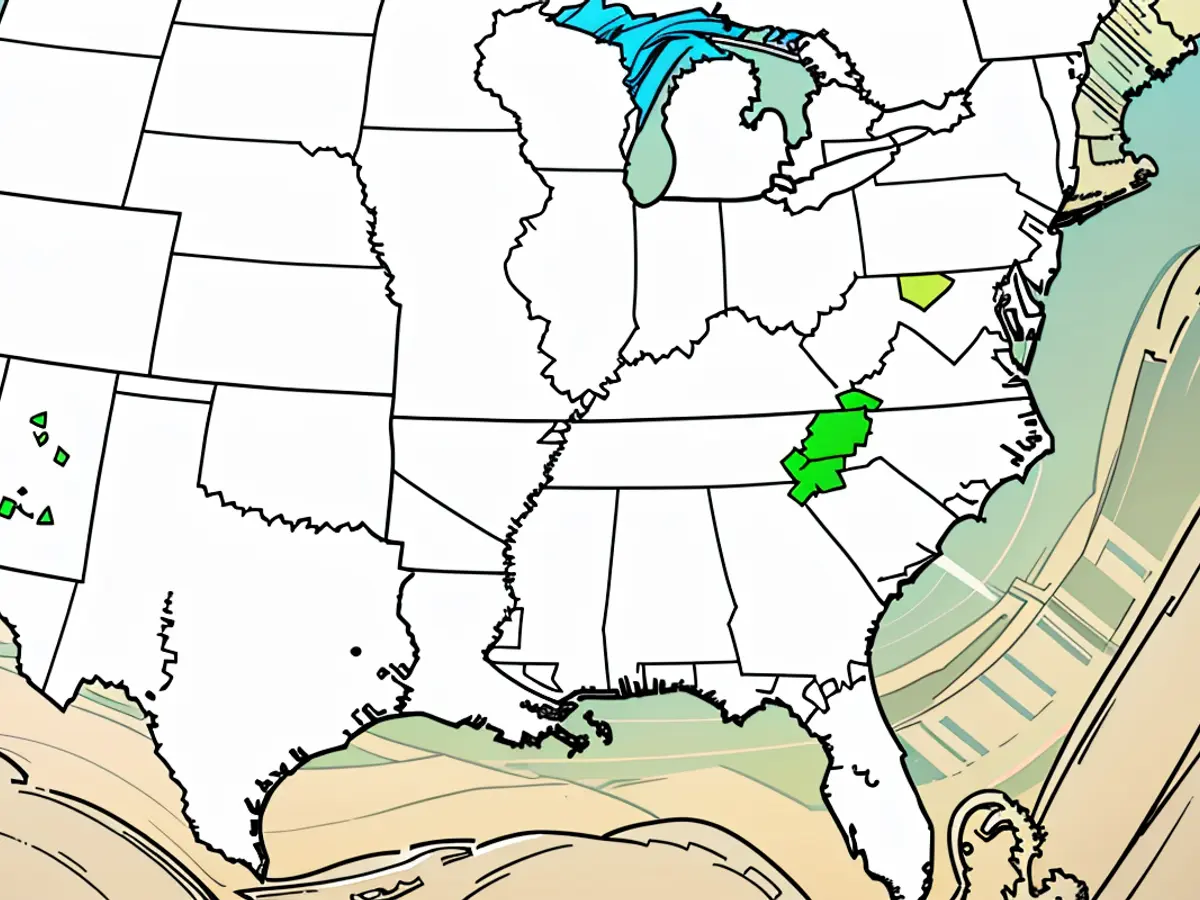Unprecedented flood crises have wreaked havoc across the United States, serving as a stark prediction of future events.
Unbelievably, the National Weather Service has issued an astounding 91 flash flood emergency alerts this year, breaking the record set in 2003 when this severe language was first utilized.
Flash flood warnings indicate a perilous situation, but flash flood emergencies are extraordinarily rare – accounting for just around 1% of flash flood warnings since 2019 – for a reason.
As Kate Abshire, a hydrologist and head of the weather service's National Flash Flood Services, put it, "It's the ultimate weapon in our arsenal." This tool is used to emphasize the extreme danger to life and property and the potential for catastrophic damage.
These warnings are a measure of the chaotic and devastating nature of flooding this year. They have claimed numerous lives, radically transformed landscapes and cost the United States billions of dollars.
The most recent flash flood emergency unfolded in Roswell, New Mexico, recently. The desert city received approximately half a year's worth of rain in just 24 hours. By nightfall on Saturday, roads had transformed into raging rivers. Hundreds were stranded and rescued, and at least two lives were lost.
This is the kind of extreme rainfall event that scientists anticipate as the planet warms.
The heaviest rainfall events are becoming more frequent and intense as the world warms due to fossil fuel pollution. A warmer atmosphere can absorb more moisture, like a sponge, and release it as torrential rainfall.
"We are already seeing the consequences of climate change reflected in this year's catastrophic flash flooding events," according to Astrid Caldas, a senior climate scientist with the Union of Concerned Scientists.
"Extreme rain events have been happening a lot more and are likely to continue to happen a lot more," Caldas added.
Development near waterways and in mountainous regions is also putting people in harm's way and increasing the risk for catastrophic, life-threatening flooding disasters.
"It's about where we build, how we change the natural flow of water," Caldas explained. "Water always finds the easiest path, so the fact that we have built so much, particularly along riverbanks, is why flooding events are increasing in the U.S."
Tropical woes
The number of flash flood emergencies fluctuates annually and depends heavily on shifting weather patterns and tropical systems affecting the U.S.
Tropical systems are driven by vast amounts of moisture, which they often release in the form of intense rainfall.
This is true of this year. Rainfall from hurricanes Debby, Francine, Helene and Milton accounted for about half of all flash flood emergencies issued this year, according to a CNN analysis of archived warnings.
Helene dumped unprecedented rainfall amounts of up to 30 inches in western North Carolina and caused catastrophic flood damage, leaving many areas unrecognizable.

Helene was responsible for over 30 flash flood emergencies by itself this year, more than the total number of flash flood emergencies last year.
Like all heavy rain events, tropical systems are being made even more intense in a warming world.
They're also getting a boost from scorching warm bodies of water like the Gulf of Mexico, which not only help them to quickly intensify, but also add more moisture to the atmosphere.
Oceans are heating up as temperatures continue to rise globally. The Gulf of Mexico spent a significant portion of the summer and early fall at record-high temperatures, acting as fuel for tropical systems.
All of the hurricanes that hit the U.S. this year were fueled by the Gulf.
Cascading disasters
The increasing frequency of extreme weather due to climate change has also contributed to a flood disaster.
In early summer, the South Fork and Salt fires ravaged thousands of acres of southern New Mexico, destroyed hundreds of homes and businesses, and claimed at least two lives.
Shortly after, heavy rainfall pummeled the scorched area, triggering several flash flood emergencies. Because the burned, ash-covered soil was less capable of absorbing rainfall, it became a raging river of water, mud, and debris that caused even more damage.
This fire-to-flood disaster was one of many such disasters this year.
Overall, there have been at least 45 flood-related major disaster declarations this year, according to FEMA. And at least 24 billion-dollar extreme weather disasters have already occurred in the U.S. in 2024, a number that is taxing FEMA's disaster relief funding.
Flood-related disasters will only continue to increase as the atmosphere and oceans warm and combine to create a powerful recipe for a new normal.
"The past does not predict the future anymore," Caldas warned.
CNN’s Ella Nilsen contributed to this report.
The extreme weather conditions and heavy rainfall this year have made weather-related disasters more prevalent, resulting in the loss of numerous lives.
The unusually high number of flash flood emergencies can be attributed to the amplified intensity of tropical systems, such as hurricanes Debby, Francine, Helene, and Milton, which have significantly contributed to the record-breaking figures.









